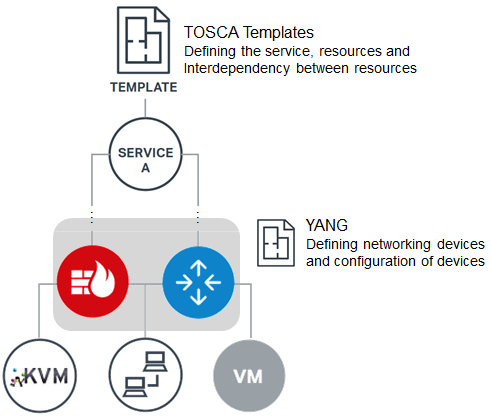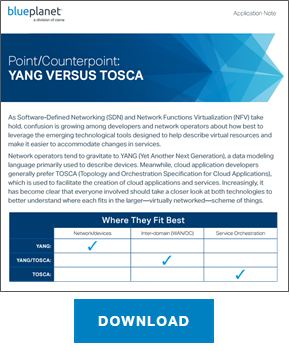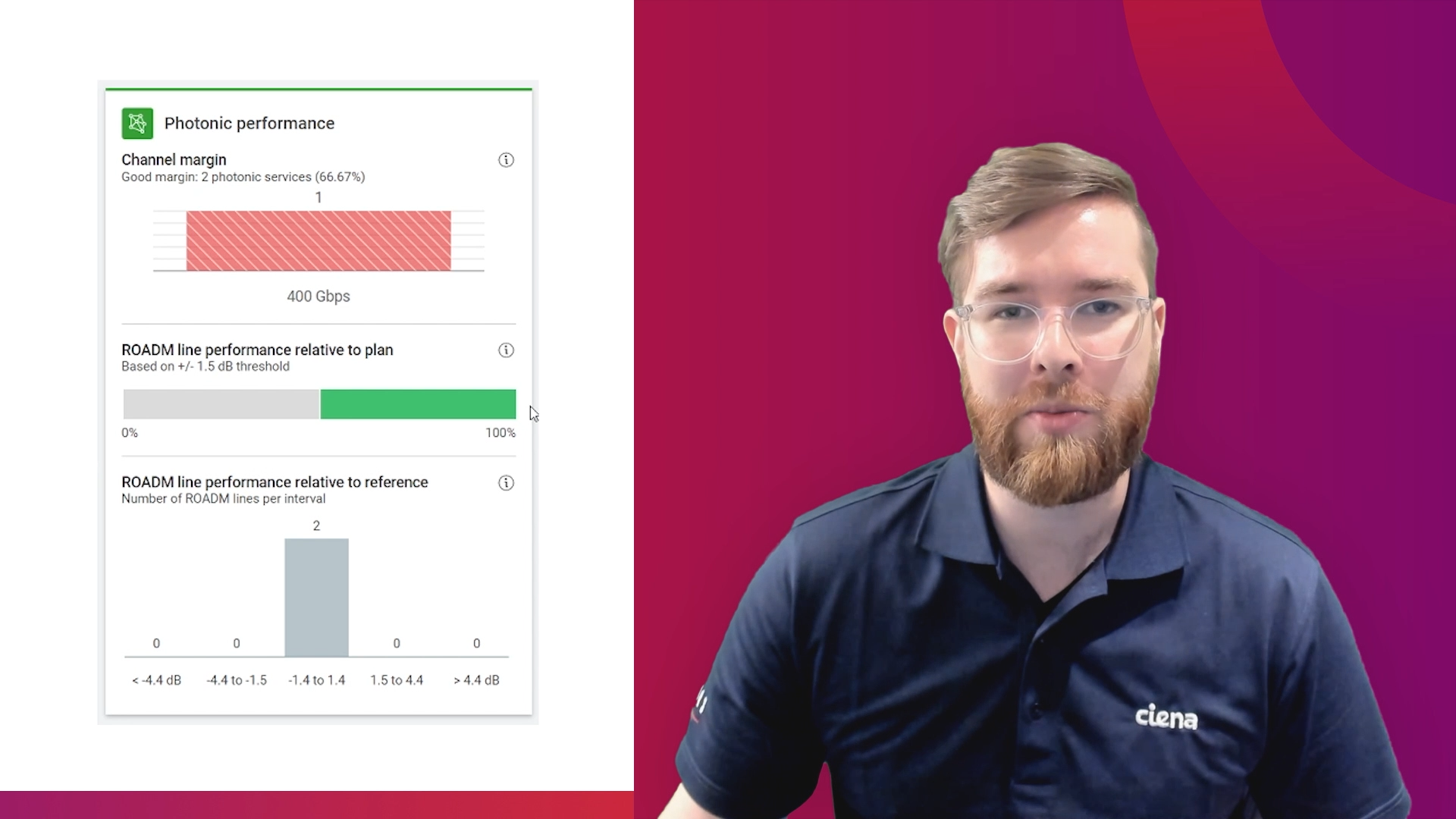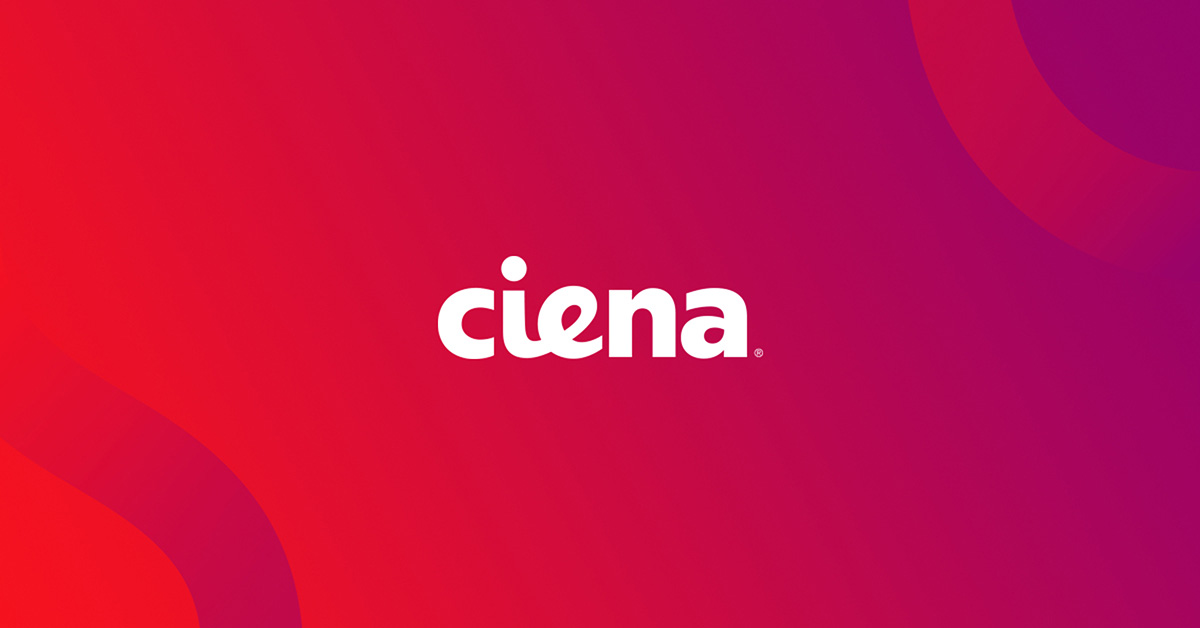Why Model-Driven Templating Matters with SDN and NFV networks
By now, most network operators understand that service orchestration is used to coordinate operations and unify network management across multiple heterogeneous platforms, which is crucial to enabling the transition to DevOps and accelerating the development and delivery of new revenue-generating services.
In this realm, Ciena’s Blue Planet team has cultivated extensive expertise creating a template-based approach that helps customers develop and deliver new services more quickly. In fact, as the industry leader in this push, we have fine-tuned the use of templates in many successful customer implementations over the last several years.
Networking and IT pros are quite familiar with the ‘old’ way of developing and deploying services -- a tedious, time-consuming and operationally inefficient process, heavily dependent on vendor-specific, hard-coded back-office systems that require custom coding and/or costly professional services to implement.
Delivering new services using the old method is a slow, costly process that effectively decreases competitiveness. To keep up with large cloud players such as Amazon and Google, network operators understand they must migrate away from the static, manual processes they’ve used for decades. Instead, they must embrace a more collaborative and automated DevOps-style approach, using tools and techniques designed to help them improve service quality, shorten time-to-implementation and quickly adapt to ever-changing customer requirements.
What network operators may not yet fully grasp, however, is the pivotal role model-driven templating can play in the deployment of services within SDN and NFV networks. That’s why it is worthwhile to understand how it works, as the use of templates simplifies the new service creation process to the point where essentially anyone willing to learn can participate in the creation of new services.
 So what are model-driven templates?
So what are model-driven templates?
In a nutshell, model-driven templates are used to specify a configuration, define relationships, dependencies or the sequencing of resources to be used in a new service offering. Templates also help developers by making it easy to create reusable building blocks that may be used as resources for other new services.
To better understand how model-driven templates work, take a closer look at a simple network service. Such a service may start at a customer premises, include connectivity access across the metro network domains, and terminate in the cloud. To establish this service, the interfaces between the various network segments – premises, access, metro, and cloud, need to be set up and aligned so traffic can flow smoothly from end to end. In this case, templates are used to describe the configuration and how components are interconnected.
Model-driven templating with Ciena Blue Planet
Ciena’s Blue Planet multi-domain service orchestration (MDSO) platform uses model-driven templating to orchestrate and automate the end-to-end service provisioning process. In Blue Planet, templates are based on the Topology and Orchestration Specification for Cloud Applications (TOSCA). TOSCA is an industry standard that was developed by the Organization for the Advancement of Structured Information Standards (OASIS) to provide an open, common definition of virtualized services and applications, including their components, relationships, dependencies, requirements, and capabilities.
 TOSCA has been broadly adopted across many industries including IT, manufacturing and cloud services. Although it was developed for orchestrating cloud applications, TOSCA’s ability to describe topology and orchestration, and give rich semantics, make it optimal for describing networking applications as well. Bottom line, TOSCA templates make it easier to design and manage services from end-to-end, regardless of the underlying platform or infrastructure.
TOSCA has been broadly adopted across many industries including IT, manufacturing and cloud services. Although it was developed for orchestrating cloud applications, TOSCA’s ability to describe topology and orchestration, and give rich semantics, make it optimal for describing networking applications as well. Bottom line, TOSCA templates make it easier to design and manage services from end-to-end, regardless of the underlying platform or infrastructure.
With Blue Planet, network operators use TOSCA templates to define and automate the deployment of new services made up of any physical and/or virtual resources. Using Blue Planet to automate service creation across a physical network, for example, a network operator may have a service with a physical router at the customer premises. Later, the network operator may create a new, functionally equivalent service with a virtualized router (vRouter). The operator could then use the Blue Planet DevOps Toolkit to on-board the vRouter and leverage the existing orchestration templates to configure and launch the router. Thus, the operator would be able to automate service delivery across both physical and virtual services.
The next step: Adopting model-driven templating
When network operators automate service delivery, services can be turned up ‘on-demand’ – far faster than the current 30 to 60 days it takes for traditional service turn-ups. Leveraging Blue Planet, TOSCA and model-driven templates, network operators can introduce and automate new services on demand, in seconds or minutes.
The Blue Planet DevOps Toolkit and DevOps Exchange Community supplements those templating capabilities by facilitating open source-style collaboration between Blue Planet customers and ecosystem partners, and features ‘libraries’ of available resource adapters and service templates. Field-proven and deployed in many organizations, including large carriers and MSOs, Blue Planet templates are essential to helping network operators gain open, agile and automated networks and operational processes.
Learning to embrace templating and a DevOps culture will increase collaboration across a network operator’s internal product and IT operations teams. Templates ultimately help network operators quickly build an interconnected ecosystem that will help them shrink the time it takes to roll out new services, and keep pace with dynamic business demands.






